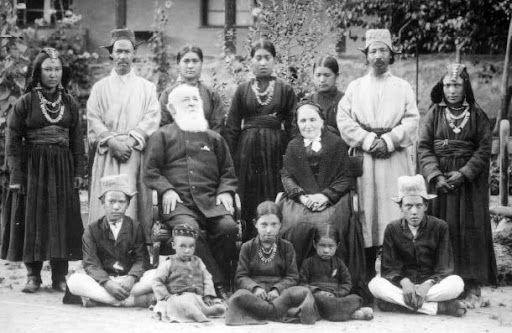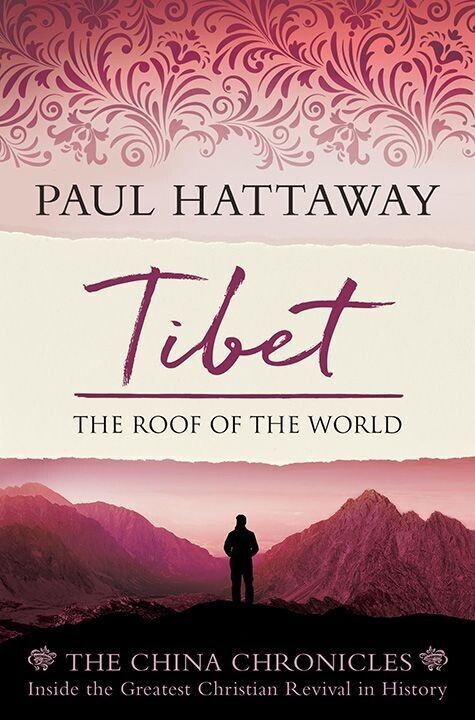The Moravians
For centuries, the small kingdom of Ladakh, in north India, has been on a key Tibetan trading route, and was a natural gateway for travelers heading across the pass to the boundless Tibetan Plateau beyond. Jesuit missionaries had first ventured into Ladakh in the 1620s on their way to the Tibetan kingdom of Guge.
By the 19th century, Ladakh—which had gained the nickname 'Little Tibet'—emerged as a vital gateway for ministry to Tibet. With the door to Tibet firmly closed and north India much easier to access since it was part of the British Empire, the influence of Ladakh's Moravian Christians led to the translation of the Tibetan Bible, and their witness has endured to the present day.

The first Moravian missionaries to live in the area were Wilhelm Heyde and Edward Pagel, who left Germany in July 1853, just two months before the great missionary statesman Hudson Taylor first sailed to China. The Moravian duo initially attempted to reach Mongolia, but finding their access blocked by the Russians, they headed for India.
For a time the missionaries tried to find a way to travel across Tibet to reach their beloved Mongolia, but they were sternly warned against the idea by the local governor, who told them they would be immediately arrested and jailed if they sought to enter Tibet.
Realizing God had closed the door to Mongolia, Heyde and Pagel accepted His will and settled down in the Tibetan village of Kyelang. There they spent the rest of their lives focusing on the great needs of the Tibetan people. Incredibly, Wilhelm Heyde and his wife Maria lived in Kyelang for 48 years without ever returning to their homeland.
For decades Maria proved to be a great asset in the mission as she ministered God's love to women and children. Most of the work seemed to be accomplished in the bitterly cold winter months, when the Christians came down from the mountains to live in the town. She led a school of 40 girls, whom she also taught to knit socks. Between 400 and 500 pairs were sold each year, which helped finance the running costs of the school.
Decades later, at the start of the 20th century, a visiting missionary was so impressed by the quality of the Moravian work that she was moved to remark:
"The converts meet for instruction and discussion twice daily, and there is daily worship. The mission press is kept actively employed in printing parts of the Bible which have been translated during the summer, as well as simple tracts written or translated by Mr. Heyde.... All honor to these noble German missionaries, learned, genial, cultured, radiant, who, whether teaching, preaching, farming, gardening, printing, or doctoring are always and everywhere 'living epistles of Christ, known and read of all men."

Another Moravian base was established in the small town of Poo (also known as Spuwa), in the present-day north Indian state of Himachal Pradesh, just 8 miles (13 km) from the Tibetan border, but a painstaking 438 miles (705 km) from Ladakh. Surrounded by massive snow-capped mountains, Edward Pagel and his wife served at Poo for 30 years, until they died within a few days of each other in 1883.
The Moravian work in north India employed multi-faceted strategies that were designed to serve the entire community holistically, presenting Christ to meet people's spiritual and physical needs. The missionaries opened medical clinics and established the first boys' and girls' schools in the region.
Over time, many of the Ladakhi children who attended the Moravian schools secured good government jobs, and the gospel gained a firm foothold as the graduates grew up and took jobs of influence in the community. As they had learned to work hard and honor God with their resources, the Christians also became wealthy compared to most other Ladakhis; establishing a trend that continues to the present day.
The Moravian work experienced a boost when a gifted German linguist named Heinrich Jaeschke joined the mission. He proved to be a major catalyst in the crucial task of translating the Scriptures into Tibetan—a remarkable story which is detailed in a later chapter of this book.
Although the Moravians baptized their first Tibetan converts in 1865, the work grew slowly, as wave after wave of attacks from the Buddhist hierarchy battered and bruised the fledgling body of Christ. A breakthrough occurred in the 1880s, when a Tibetan evangelist named Nathanael shared the gospel in all the villages around Leh. His powerful preaching and uncompromising witness led many people to repentance and faith in Jesus Christ.
As is still the case today throughout the Tibetan world, baptism was the true mark of a person's decision to follow Christ. Finding "believers" was not too difficult, but when someone decided to be baptized, the entire community and spirit-world seemed to rise up against him or her. Consequently, many new Christians were intimidated into abandoning their newfound faith. By 1908, after 43 years of tireless endeavor, the Moravian Mission numbered only 139 baptized members.
The Moravians Today
Although the Moravian work never mushroomed into a large movement of Tibetan believers, the faithful and self-sacrificial service of the missionaries and their disciples planted the seed of the gospel deep in the hearts of many Ladakhi Tibetans. Over the years hundreds of Buddhists renounced their sins and professed Jesus Christ as Lord and Savior, making the Moravian mission one of the most effective of all Evangelical initiatives among the Tibetan people.
Today, more than 160 years after Heyde and Pagel first entered Tibetan territory, a Moravian Christian community remains in Ladakh, numbering a few hundred believers. Their influence continues to have an impact on Tibetan communities across the border in Tibet's Ngari Prefecture, where small pockets of believers reside.
© This article is an extract from Paul Hattaway's book ‘Tibet: The Roof of the World’. You can order this or any of The China Chronicles books and e-books from our online bookstore.
1. Isabella L. Bishop, Among the Tibetans (London: The Religious Tract Society, 1904), pp. 155-56.





